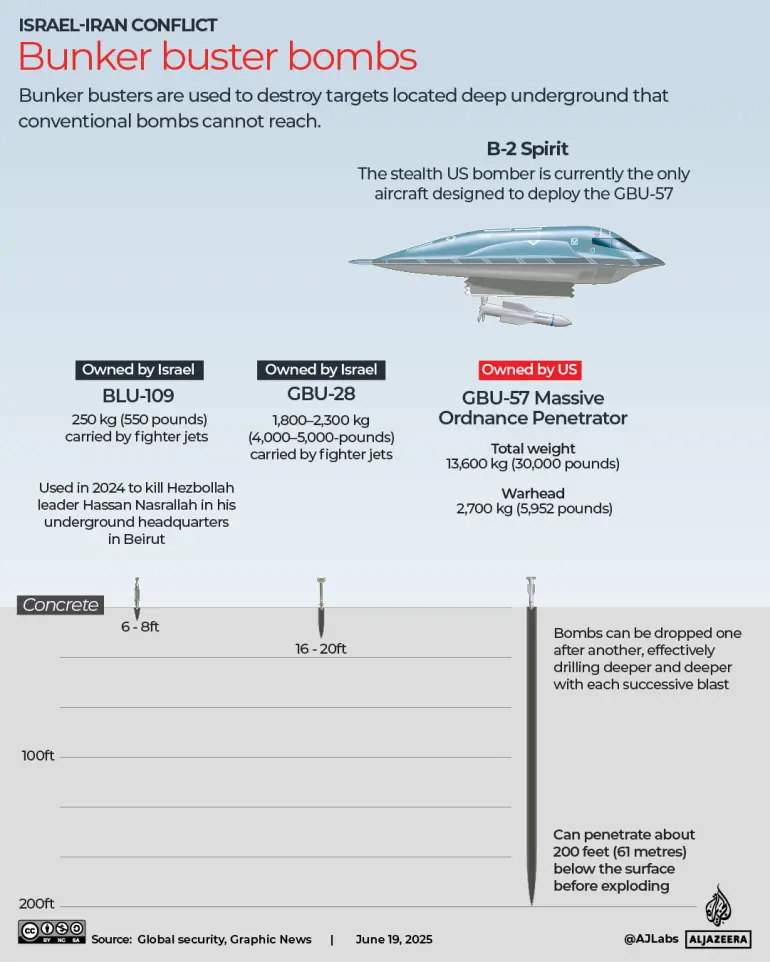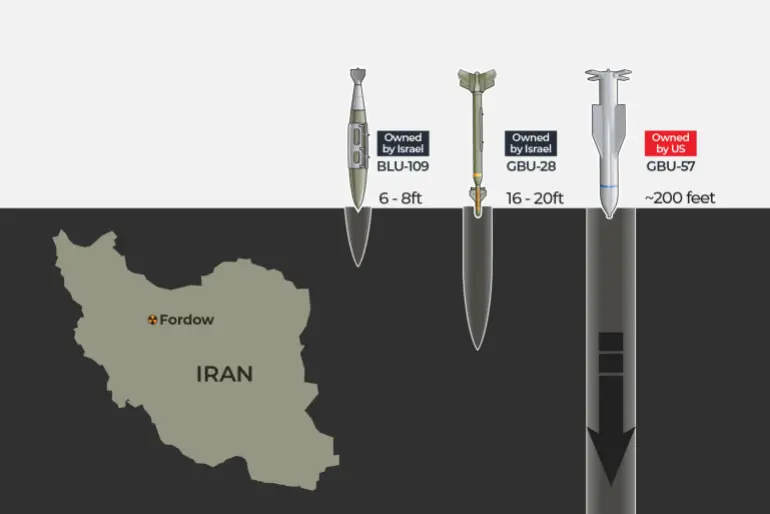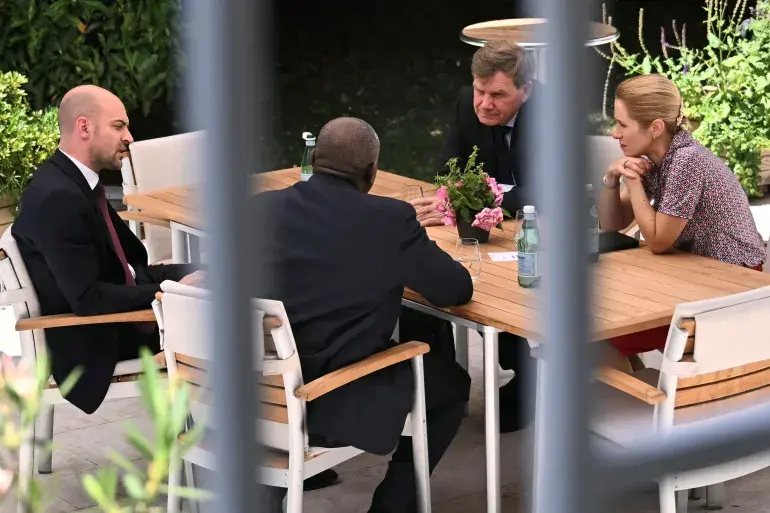Why Fordow Matters: Inside the US Strike on Iran’s Most Secure Nuclear Facility
- TPP

- Jun 22
- 4 min read

Inside Iran’s Fordow Nuclear Facility: Why the US Strike Was So Significant
On Sunday, the United States launched a major aerial offensive targeting three of Iran’s nuclear facilities, an action that quickly escalated tensions across the Middle East. Among the targets were Iran’s primary uranium enrichment plant at Natanz, the nuclear complex in Isfahan, and most notably, the Fordow Fuel Enrichment Plant — a site previously thought to be nearly impenetrable due to its deeply buried location.

While Israel had launched missiles at Fordow earlier on June 13, those attacks reportedly did not cause substantial damage, largely due to the facility’s fortified underground structure. By contrast, the U.S. airstrike, authorized by former President Donald Trump, used B-2 stealth bombers, aircraft capable of carrying the Massive Ordnance Penetrator (MOP) — a 30,000-pound bomb designed to destroy deeply buried targets, such as underground bunkers and fortified missile sites.
Soon after the strike, Trump declared, “FORDOW IS GONE,” on his Truth Social platform. However, the actual extent of the damage remains unverified. Iranian state media (IRNA) reported that residents near the Fordow site, located approximately 30km (18.5 miles) northeast of Qom, did not experience any explosions or disruptions. Local authorities emphasized that the situation remained normal, and an adviser to the Iranian Parliament suggested the site had been evacuated in anticipation of an attack, claiming no irreversible damage had occurred.

What is the Fordow Nuclear Facility?
Fordow began as a military base for the Islamic Revolutionary Guard Corps (IRGC) before it was repurposed into a nuclear enrichment facility. Its existence was officially acknowledged by Iran in September 2009 after Western intelligence agencies had already uncovered the site’s development. Shortly after, the US, UK, and France publicly confirmed the facility’s existence, citing intelligence that Iran planned to install 3,000 uranium centrifuges there.
Fordow is particularly significant because it is built hundreds of meters inside a mountain, making it one of the most fortified nuclear sites in the world. It is also the only known facility in Iran where the International Atomic Energy Agency (IAEA) found traces of uranium enriched close to weapons-grade purity — a level of enrichment beyond 83% U-235, discovered during a surprise inspection in 2023.
Why Is Uranium Enrichment Important?
Uranium enrichment refers to increasing the concentration of the uranium-235 isotope in natural uranium. While natural uranium contains only about 0.7% U-235, nuclear power plants generally require enrichment to around 3–5%, and nuclear weapons need uranium enriched to approximately 90%, known as weapons-grade uranium. Enrichment beyond 60% is widely considered a red flag, as it drastically reduces the time needed to achieve weapons-grade levels.
At Fordow, the IAEA reported the installation of up to 2,976 centrifuges, far fewer than the approximately 50,000 centrifuges at Natanz, Iran’s main nuclear enrichment site. However, Fordow’s underground protection has made it a strategic and symbolic stronghold in Iran’s nuclear infrastructure.
You might like this: Iran-Israel Conflict: Can Divided European Powers Bring Peace?
History of Nuclear Development at Fordow
After the IAEA’s 2009 confirmation of Fordow, it became a central point in Iran-US negotiations, which later contributed to the formation of the Joint Comprehensive Plan of Action (JCPOA) in 2015. The JCPOA was an international agreement involving Iran, the US, UK, France, Germany, Russia, China, and the EU, aimed at limiting Iran’s nuclear activities in exchange for lifting economic sanctions.
Under the JCPOA, Iran agreed to:
Cease uranium enrichment at Fordow for 15 years
Not store any nuclear material at the site
Convert the facility into a physics and technology center
Limit the number of centrifuges to just over 1,000, with the rest moved to Natanz
By January 2014, Iran had stopped production at Fordow, and by 2017, the IAEA confirmed that Iran was in compliance with its JCPOA commitments.

Return of Nuclear Activity Post-JCPOA Collapse
After President Trump unilaterally withdrew from the JCPOA in 2018, Iran began rolling back its commitments. By January 2023, IAEA inspectors discovered that Iran had connected two sets of centrifuges at Fordow, enabling uranium enrichment to 60% purity — a clear violation of its obligations.
More alarmingly, particles enriched to 83.7% were also detected, prompting the IAEA to suspect that Iran might be approaching weapons-grade enrichment. Iran denied these findings, blaming potential sabotage or contamination and claimed that it had investigated thoroughly.
Why Was Fordow So Hard to Hit?
Because Fordow is built deep inside a mountain near Qom, conventional munitions would have limited effect. While Israel has long feared the facility and even placed it under surveillance, it lacks the ability to effectively neutralize such a deeply buried target without launching high-risk ground operations.
However, the US possesses the Massive Ordnance Penetrator (MOP), a 13,600kg bomb specifically engineered to destroy hardened underground facilities. Dropped from B-2 stealth bombers, a series of MOPs could theoretically collapse the underground chambers of a facility like Fordow. While the US has confirmed the use of B-2 bombers, it has not disclosed whether the MOP was deployed during Sunday’s strike.
Has Fordow Been Destroyed?
Despite Trump’s bold claim, the true status of the Fordow facility remains uncertain. The IAEA, in its most recent report after Israel’s June 13 attack, had found no visible damage. Following the US-led strike, Iranian officials maintain that the facility had already been evacuated and that no lasting damage occurred. However, without independent verification, Fordow’s current operational status remains a matter of speculation.

Still, the Fordow facility continues to be a symbol of Iran’s nuclear ambitions and defiance, making it a strategic flashpoint in the broader conflict over nuclear non-proliferation and Middle East security.
Click for Daily Quotes:
Stay updated with the latest news by joining our Telegram channel – The PRESS Pad , and follow us on Instagram and X.



Nice